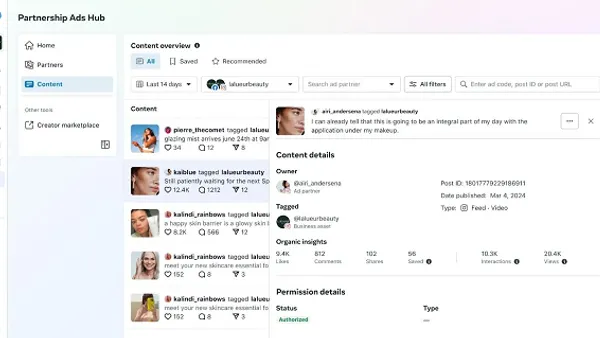Meta has provided some guidance for marketers using Marketing Mix Modeling (MMM) as a means to measure their campaign performance.
MMM seeks to provide a more complete picture of your relative marketing efforts, by showing how different aspects have likely driven response, as opposed to last-click attribution, or another flawed methodology.
Because as explained by Meta:
“Marketers today contend with many challenges when measuring the impact of their efforts. Part of that complexity comes from the proliferation of marketing channels they engage with: Running campaigns across TV, digital, social, and offline channels, it’s tough to know what’s working and what’s not.”
According to Meta’s data, marketers who utilize MMM are able to get a much better understanding of their marketing performance than click-based measurement “particularly with the rise of immersive formats like video that don’t generate clicks.”
But in order to get the best results and feedback from your analysis, you need to ensure that your MMM analysis is calibrated the right way.
On that front, Meta offers some key tips:
- Using MMM in combination with Lift Measurement will provide additional validation of your overall results, as both tests will indicate relative performance. And if the results reinforce each other, that should be indicative, but Meta says that this isn’t a particularly precise means of measurement (though it’s better than using MMM results in isolation).
- Meta says that using average size estimates within your MMM approach can provide better results: “In this method, the parameters of the MMM - such as the mean and spread of the estimate - are directly informed by the results of experiments. This approach allows the prior knowledge from lift experiments to guide the optimization process of MMM, improving accuracy without the need to rebuild the model from scratch.”
- The most accurate validation approach, however, is fine-tuning your models with experiments. This approach, Meta says, uses lift experiments to adjust all of the details of your campaigns, “like how long ads keep working after they run (ad stock) and how returns decrease as you spend more (media saturation).” Meta says that this approach helps to capture both immediate and carryover effects, providing a more complete picture of campaign effectiveness.
Meta says that expanded validation, and calibration of your marketing methodology will provide more insight to inform your strategies, and cater to a broader range of signals stemming from different discovery and usage behaviors.
Which makes sense, and really, the bottom line here is that you can’t rely on a single source of truth in your ad results, you need to expand and validate your reporting with relevant indicators from different sources, where you can.
Really, that comes down to your tracking capacity, and understanding how people have come to your content, through different types of exposure. That’s the challenge, and these approaches may provide a more workable, accurate approach for your ad efforts.
You can check out Meta’s full MMM methodology overview here.











